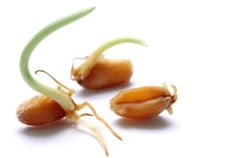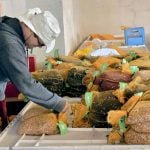Regular rain and wet soil has greatly increased the risk of sclerotinia in Manitoba and eastern Saskatchewan canola fields.
As of June 24, moist surface soil and warmer temperatures have created ideal conditions for the disease in Manitoba, said Manitoba Agriculture’s sclerotinia risk forecast program.
When the sclerotia germinate, they produce structures called apothecia which release spores that cause stem rot in canola. Spores are released by the apothecia at about the same time as canola comes into flower. Apothecia have been detected in many areas of Manitoba.
The project says most crops are in the rosette stage, but in parts of south-central and southwestern Manitoba and southeastern Saskatchewan, the crop is in the bud stage.
A few early seeded fields are flowering.
The risk map indicates the risk of sclerotinia to fields that are in the 20 to 30 percent flowering stage, which is the best stage for a fungicide application.
Sclerotinia risk is greatest in areas where there has been a problem in recent years, where there is a short rotation between canola crops and where high yields are expected.














